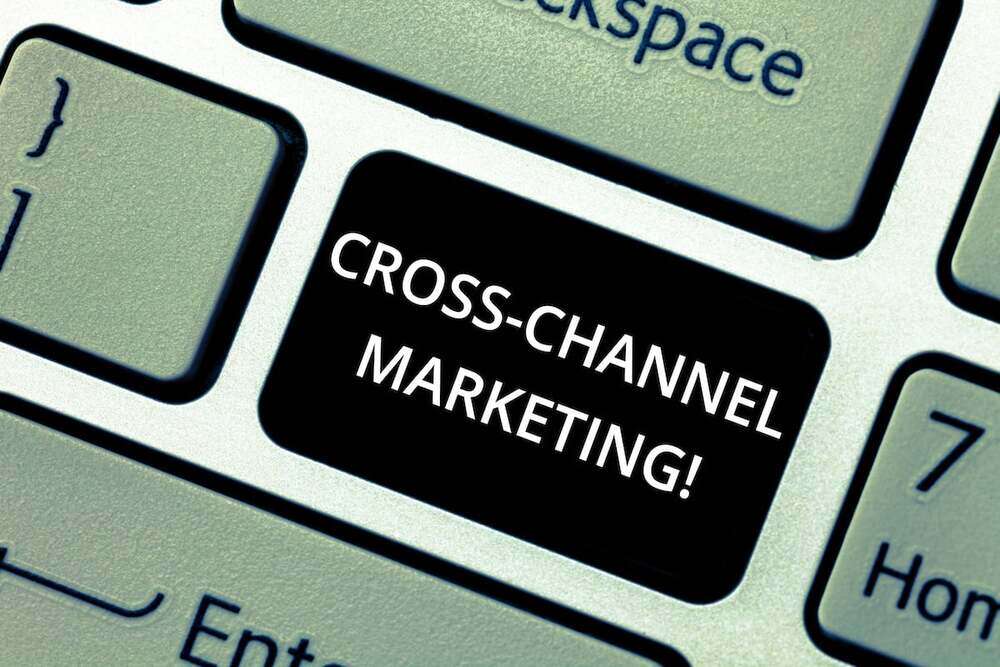

Cross-channel marketing is an essential part of many business strategies. As audience behaviour continues to diversify, successful marketing tactics should engage with an individual through their chosen channel and tailor the message to suit their needs.
Unfortunately, the challenge of maintaining a strategy across a range of verticals is clear. It’s easy to get lost in the wealth of data available, miss key insights, and focus on the wrong areas of a strategy. These issues will lead to reports of poor performance, lack of accountability for specific channels, and difficulty maintaining a strategy over a long period of time.
Even with the dangers mentioned, we still need to work on delivering a robust cross-channel strategy to achieve success in 2023. According to Omnisend, brands that leverage three or more channels in their marketing efforts see an up to 287% increase in conversion rate, and up to 90% of users who engage with multiple channels will return to that brand at a later date. So what are the challenges we should be wary of when designing our strategy?
Cross-channel vs. multi-channel marketing
Before addressing the challenges, it’s worth discussing the distinction between cross-channel marketing and multi-channel marketing. Although they appear similar (and can in fact be, in some instances, interchanged), the approaches differ in a profound way.

Although both approaches use multiple independent channels within the wider strategy, relying on customer intelligence software to understand engagement and form future strategy, the main difference lies in how those channels relate back to the parent strategy itself.
In a multi-channel approach, each channel gets individual investment, with the results recorded in the same way. A channel’s ability to perform will rely on the channel itself.
Given that certain channels inherently drive higher ROI on paper, this can lead one to question the value of a given channel. Social media is a key victim in many verticals, as users are not generally in a conversion mindset when surfing their preferred platform, leading to a cut in investment and lack of attention.
In a cross-channel strategy, each channel gets individual time and investment. But each is still part of a ‘single source of truth’ - a place for all data to coalesce and help drive richer insights.
The added context here helps showcase the value of each channel. Although they may not be high converters themselves, they instead drive awareness and lead to repeat visits that convert at a later date. It also leads to a more cohesive strategy - all channels are a part of the whole picture and help to keep your brand identity intact across each channel.
The challenges of cross-channel marketing
Treating each channel with the same KPIs
Every channel you choose to include in your marketing strategy needs to be analyzed and considered as part of the parent strategy. This is both for the intended goal of that channel and for the expected audience you’ll attract through it.
Many times, however, some channels will be given the same KPI - conversions. While conversions are the end goal for any business to achieve, many channels do not convert as efficiently as others. A user who receives advertising over social media, for example, is, as mentioned, typically not in a mindset to buy a product.
A user who is on your website, however, is in a much more amenable state of engagement and may respond to a well-designed pop-up showcasing an offer. If we measure both of these channels with the same KPI, the data would not support investment in social media, which will lead to less focus in a strategy.
The reality is that social media can play a key role in generating conversions. Advertising to previously unaware users creates a touchpoint. This puts them into the awareness stage. You should action this process for each channel you integrate into your strategy. Be sure to understand the intent of each channel and apply relevant KPIs to get accurate channel performance.

Image created by author | Data sourced from wordstream.com
Poor data collection processes & lack of personalization
In addition to the previous point, it’s important to have a robust data collection process in place when building your cross-channel strategy. Too many businesses either lack the expertise, have yet to promote their data management infrastructure to the cloud through a hybrid integration strategy, or don’t have the time to create proper attribution models for channels - user tracking across multiple sessions to understand complex behaviors in a user journey, for example.
To be able to give each channel fair attribution for a conversion, we need to understand the entire user journey. Furthermore, the sales process needs to accommodate the user on a personal level, and the best way to understand a user is through data analysis.
The challenge lies in collecting the data and using it to inform your strategy across other channels in their expected journey. Some brands are experimenting with conversational artificial intelligence platforms. These take personalization to a new level, allowing visitors to shop in new and exciting ways.

Shoppers are far more likely to return to a store that offers personalized content as part of the whole shopping experience. The more you can learn about how users engage with your business, the better informed you’ll be when it comes to pivoting digital marketing strategy long-term.
To put the importance of such activity into perspective, 88% of shoppers are likely to repeat shopping at brands offering a personalized experience on-site. The more you can learn about how users engage with your business, the better informed you’ll be when it comes to pivoting digital marketing strategy long-term.
Lack of support for tertiary channels
Many businesses will have their website, email communications, a number of social media platforms, paid advertising, and SEO channels - among others - as their primary and secondary properties being actively worked on. Many times, however, brands will forget about two key ways your audience engages with you - customer support and FAQs.
It’s vital that companies build a robust system for users that need support remotely in either a pre-purchase or post-purchase issue. Any form of obstacle will quickly lead to a lost conversion or lost repeat customer. Customer service situations are the most contentious of all. Avoid these situations at all costs.
Although these aspects of a company are not considered ‘traditional’ marketing channels, they nevertheless represent your brand and are a key point of customer engagement, making the experience every bit as important as any other channel you work with.
Create resources that showcase expertise to strengthen your brand and support visitors in tandem. Find ways that you can create a support network that goes beyond your competition. For example, create a 24/7 support facility using AI call center solutions. Have chatbots available at all times to help with a range of common challenges faced by visitors. Then provide real-person support for complex issues.

Inconsistent messaging and lack of brand cohesion
The final and most common problem businesses will face when crafting a cross-channel digital marketing strategy comes through inconsistent messaging and the resulting lack of cohesion for your brand across channels.
It’s likely that channels are being managed by different individuals or teams within your organization. This inherently leads to the threat of disconnects as work is completed and the marketing strategy matures. The challenge lies in ensuring your channels are supporting each other to generate consistent - yet still unique - messaging. This will ensure each channel has the best chance of success.
To overcome this challenge, consider using social media tools that allow for centralized content management and coordination across your various channels.
Through experimentation, you can learn what type of messaging works best for each channel. However, the importance of having a strong brand vision you use to outline and underpin all marketing work cannot be understated. Use that brand ethos as your guiding light and the chances that your channels will stray reduces greatly.
Thinking about the big picture
With the challenges outlined, it’s time to revisit your cross-channel marketing strategy. Work with any channel teams collaboratively and find ways to optimize your messaging, improve data collection and gather insights and actionable changes through richer data and understanding of your most important asset - your audience.
Don’t be afraid to go back to the drawing board if something isn’t working. But equally avoid limiting investment in channels or campaigns if the data isn’t robust enough to prove it is underperforming. The balancing act of giving each channel the care and attention it needs, whilst scaling your marketing efforts and growing your brand is a challenge within itself, but one certainly worth rising to meet.

Don't Waste Your Talent. Turn It Into a Career With a Course That Fits Your Needs!
Keep reading

5 Tips for a Successful Cross-Channel Marketing Campaign

Cross-Channel Marketing: How to Promote Across Multiple Digital Channels

Why Cross-Channel Brand Consistency Matters

